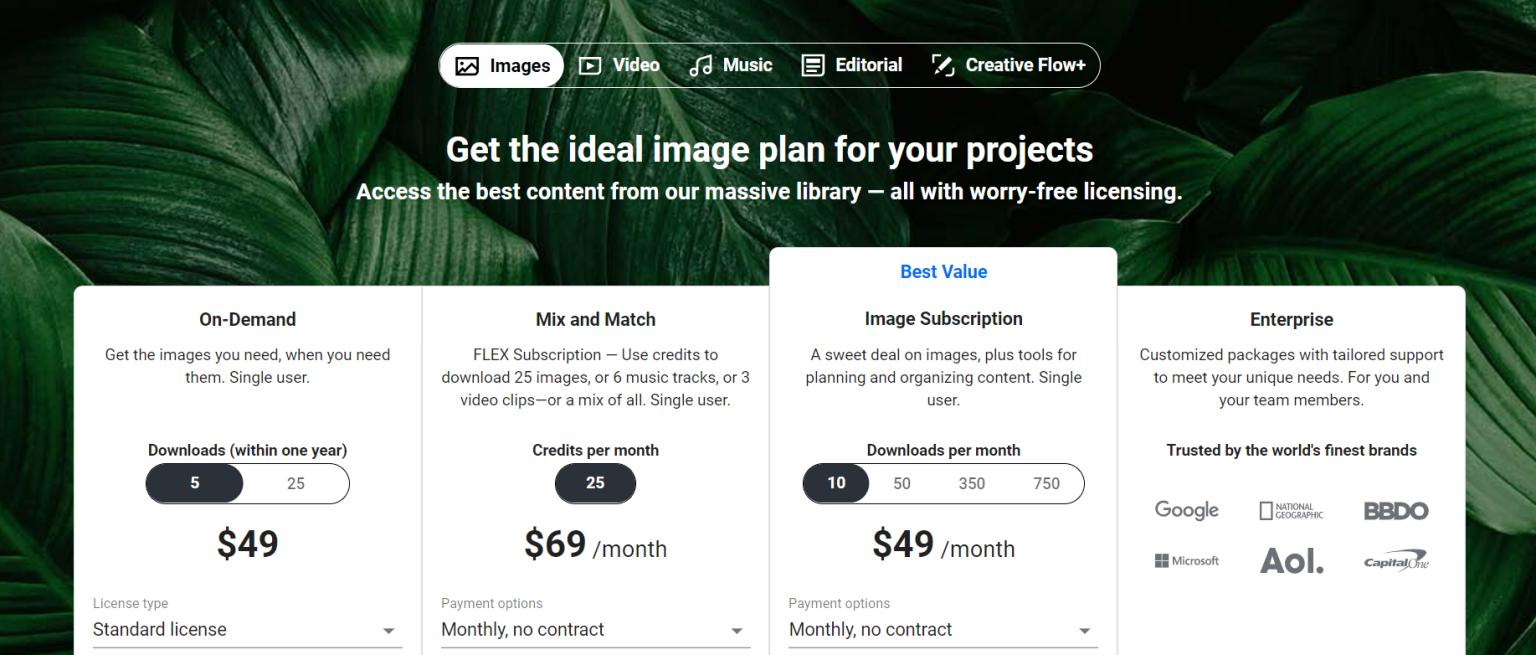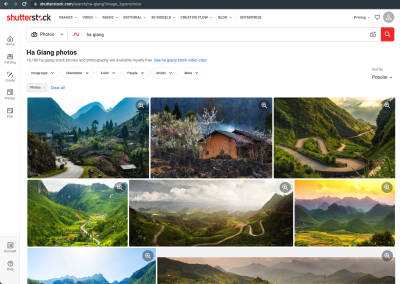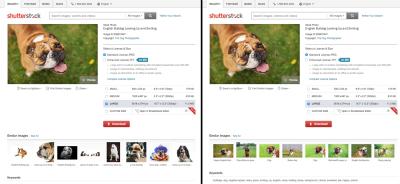If you’re a photographer, designer, or creator looking to showcase your work and earn some income, Shutterstock might be on your radar. It’s one of the biggest platforms for stock photos, videos, and illustrations, and it offers a pretty straightforward way to get your content in front of millions of potential buyers. But have you ever wondered how Shutterstock decides how much to pay you when your content gets sold? Understanding their pricing structure can help you optimize your submissions and maximize your earnings. Let’s dive into how the process works and what factors influence those prices.
Factors Influencing Shutterstock’s Pricing Structure
Shutterstock‘s pricing isn’t a one-size-fits-all deal. Instead, it’s shaped by a mix of several key factors that work together to determine how much a customer pays and, consequently, how much you earn. Here’s what plays a role:
- Type of Content – Photos, videos, vectors, and illustrations often have different pricing tiers. For example, a high-quality video might fetch a higher price than a simple photo because of its complexity and usage potential.
- Subscription or On-Demand Purchases – Shutterstock offers both subscription plans and single-image licenses. Subscriptions tend to have lower per-download prices, which means contributors earn less per sale compared to single-image purchases where the price is higher.
- Customer Usage and Licensing – The intended use of the content influences its price. Commercial uses, like advertising or product packaging, usually cost more than personal or editorial uses. The licensing type (Standard vs. Enhanced) also impacts earnings.
- Contributor Level and Sales History – Shutterstock rewards experienced contributors. If you’re new, your earnings per download might be lower initially, but as you sell more and gain a good reputation, your share can increase.
- Market Demand and Trends – Popular topics or trending subjects tend to command higher prices because they’re in high demand. Shutterstock adjusts pricing based on what buyers are looking for.
- Pricing Models and Revenue Share – Shutterstock operates on a revenue-sharing basis. The platform sets the license price, and contributors receive a percentage—often ranging from 15% to 40%. Your payout rate can also increase based on your sales milestones and exclusive content status.
All these factors blend together, creating a dynamic pricing environment. As a contributor, understanding these elements helps you produce content that aligns with market demand and pricing trends, ultimately increasing your earnings potential. Keep an eye on Shutterstock’s guidelines and stay updated on any changes to their policies—they’re always fine-tuning how they price and pay for content to meet both buyer needs and contributor fairness.
How Contributor Royalties Are Calculated Based on Image Sales and
So, you’re curious about how the royalties you earn as a contributor actually get calculated? It’s a great question because understanding this can help you make smarter decisions about what kind of content to upload and how to maximize your earnings.
At Shutterstock, your royalties depend largely on two main factors: the type of sale (standard vs. enhanced license) and your contributor level. Let’s break this down:
- Standard License Sales: These are the most common and usually involve customers purchasing images for personal or commercial use with some restrictions. When your photo is sold under a standard license, your royalty rate is a fixed percentage of the price Shutterstock charges.
- Enhanced License Sales: These are for customers who want broader usage rights, like unlimited prints or use in products for resale. Typically, the royalty rate for enhanced licenses is higher compared to standard sales.
Now, how do these percentages work? Here’s a simplified look:
| Contributor Level | Standard License Royalty Rate | Enhanced License Royalty Rate |
|---|---|---|
| New Contributor | 15-20% | 30-40% |
| Exclusive Contributor | 20-30% | 40-50% |
It’s worth noting that your contributor level can increase as you sell more images, which in turn bumps up your royalty percentage. This creates a nice incentive to keep uploading high-quality content.
Additionally, the total amount you earn per sale is influenced by the price Shutterstock sets for licensing. The platform has a standard pricing structure, but they often run promotions or bundle deals that can affect your royalties slightly. The key takeaway is that your earnings are proportional to the sale price and your royalty rate.
In summary, your royalties are a percentage of the sale price, influenced by license type and contributor level. The more high-demand your images are, and the more you elevate your contributor status, the more you stand to earn per sale. Keep creating, keep uploading, and stay aware of your contributor dashboard for real-time updates on your earnings!
The Role of Subscription Plans and Licensing Options in Pricing
Ever wondered how Shutterstock’s subscription plans and licensing options impact the overall pricing structure? It’s a big part of the puzzle because these factors directly influence how much customers pay and, consequently, how much you earn.
Let’s start with subscription plans. Shutterstock offers various subscription options for customers, such as monthly or annual plans that give them access to a set number of downloads. These plans are typically more affordable per image compared to single or on-demand purchases. Here’s how they affect pricing:
- Lower Per-Image Cost: Subscribers pay a flat rate for a bundle of downloads, which means the price per image is reduced. This often results in smaller royalties per sale compared to single-image purchases.
- Volume Sales: Because customers might download multiple images under a subscription, contributing to your total earnings, even small royalties can add up if your images are popular.
On the other hand, licensing options like standard and enhanced licenses determine how the images can be used and at what price. Customers choosing an enhanced license pay a higher fee, which boosts your royalty earnings for that particular sale. Here’s a quick comparison:
| License Type | Pricing Impact | Royalty Implication |
|---|---|---|
| Standard License | Lower cost for customers | Lower royalty rate (15-30%) |
| Enhanced License | Higher cost for customers | Higher royalty rate (30-50%) |
So, what does this all mean for you? Essentially, when customers opt for subscription plans, your earnings per download might decrease, but the total number of downloads can increase your overall earnings. Conversely, sales of images with enhanced licenses tend to bring in higher royalties per sale, which is great if your content is used in high-value projects.
Understanding these dynamics helps you tailor your efforts. For example, creating versatile images that are suitable for both standard and enhanced licenses can maximize your earning potential. Also, keeping an eye on trending topics or popular styles that attract customers using subscription plans can boost your overall sales volume.
In conclusion, Shutterstock’s pricing structures—shaped by subscription plans and licensing options—play a crucial role in how much you earn. By understanding and aligning your content strategy with these factors, you can make smarter choices and grow your contributor income over time.
Tips for Contributors to Maximize Earnings and Understand Pricing Better
Getting a clear grasp of how Shutterstock prices your content is essential if you want to maximize your earnings. While the platform has its own algorithms and policies, there are several practical tips you can follow to better understand pricing and ensure you’re making the most out of your contributions.
1. Focus on High-Demand Topics
Images, videos, and illustrations that align with current trends or popular themes tend to fetch higher prices. Keep an eye on Shutterstock’s trending categories, seasonal themes, and industry demands. For example, content related to technology, health, or business often has high licensing rates.
2. Ensure Quality and Uniqueness
High-quality, well-composed, and original content not only attracts more buyers but also tends to be priced higher. Invest in good equipment, pay attention to lighting, composition, and editing, and always strive to offer something unique that stands out from the crowd.
3. Understand Licensing Types
Shutterstock offers different licensing options—Standard and Enhanced. Standard licenses are more affordable but have restrictions, while Enhanced licenses allow for broader usage and command higher prices. When submitting content, consider how it might be licensed and priced, and clearly tag your work accordingly.
4. Use Relevant Keywords and Descriptions
Proper metadata helps your content get discovered by buyers. While this doesn’t directly influence the price, better visibility often means more downloads, which can lead to higher earnings over time. Study popular keywords and craft accurate, detailed descriptions.
5. Keep Track of Your Performance
Use Shutterstock’s contributor dashboard to monitor which types of content perform best and earn the most. Pay attention to download patterns and pricing trends. This insight can guide you to create more of what sells well and understand how pricing may fluctuate based on content type or subject matter.
6. Participate in Promotions
Shutterstock occasionally offers promotional opportunities or bonus programs. Participating in these can boost your visibility and earnings. Stay active on the platform and keep an eye out for any special campaigns that might favor your content.
Remember, understanding how Shutterstock determines pricing is an ongoing learning process. By focusing on quality, relevance, and market demand, you can better position your content for higher earnings and a clearer grasp of the platform’s pricing structure.
Conclusion and Resources for Shutterstock Contributors
Contributing to Shutterstock can be a rewarding way to earn money from your creative work, but understanding how they determine pricing is key to maximizing your success. From grasping licensing differences to optimizing your content for demand, being informed helps you make smarter decisions and get the most out of your contributions.
As you continue to upload and refine your portfolio, keep these tips in mind: focus on quality, stay updated on market trends, and use strategic keywords. Remember that Shutterstock’s platform and policies may evolve, so staying engaged with their resources is crucial.
For further learning and support, here are some valuable resources:
- Shutterstock Contributor Learning Center – Offers tutorials, tips, and updates directly from Shutterstock.
- Contributor Dashboard – Your main hub for uploading, managing, and tracking your content performance.
- Shutterstock Support – FAQs and help articles to answer your specific questions.
- Online forums and communities where contributors share insights and experiences, such as Shutterstock Contributor Facebook groups or photography forums.
By staying informed and proactive, you’ll be better equipped to navigate Shutterstock’s pricing landscape and turn your creative efforts into steady income. Happy contributing!



